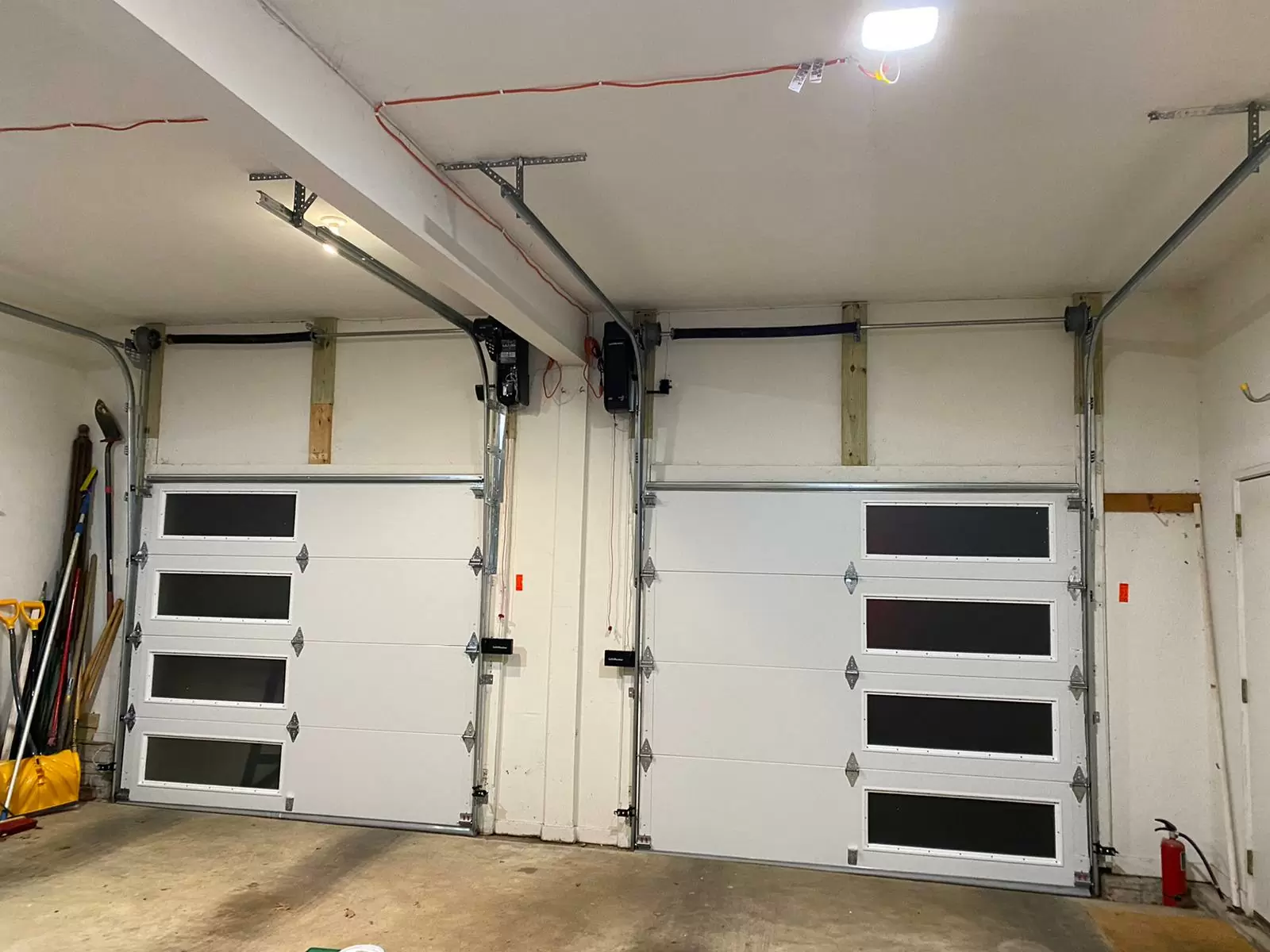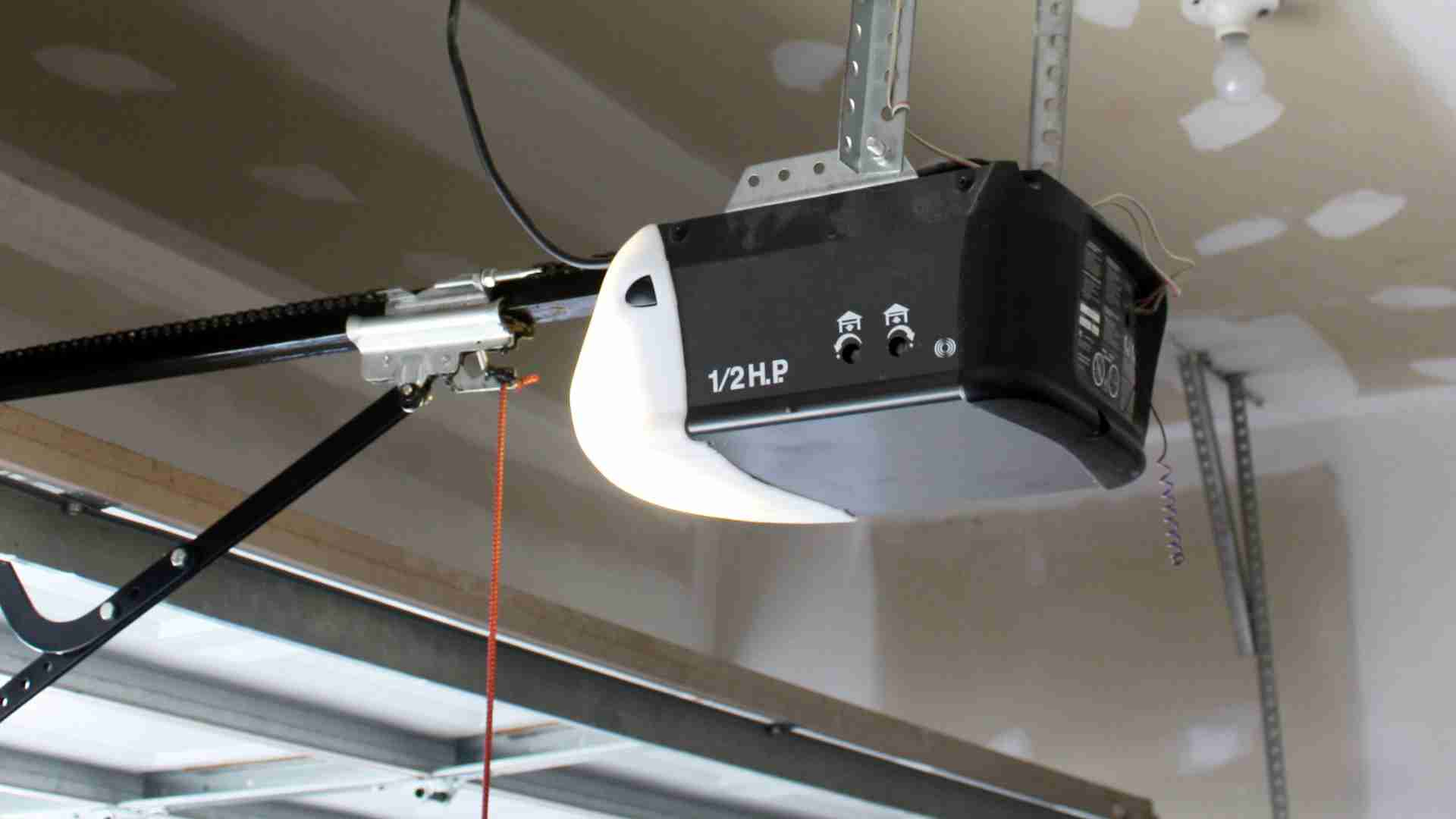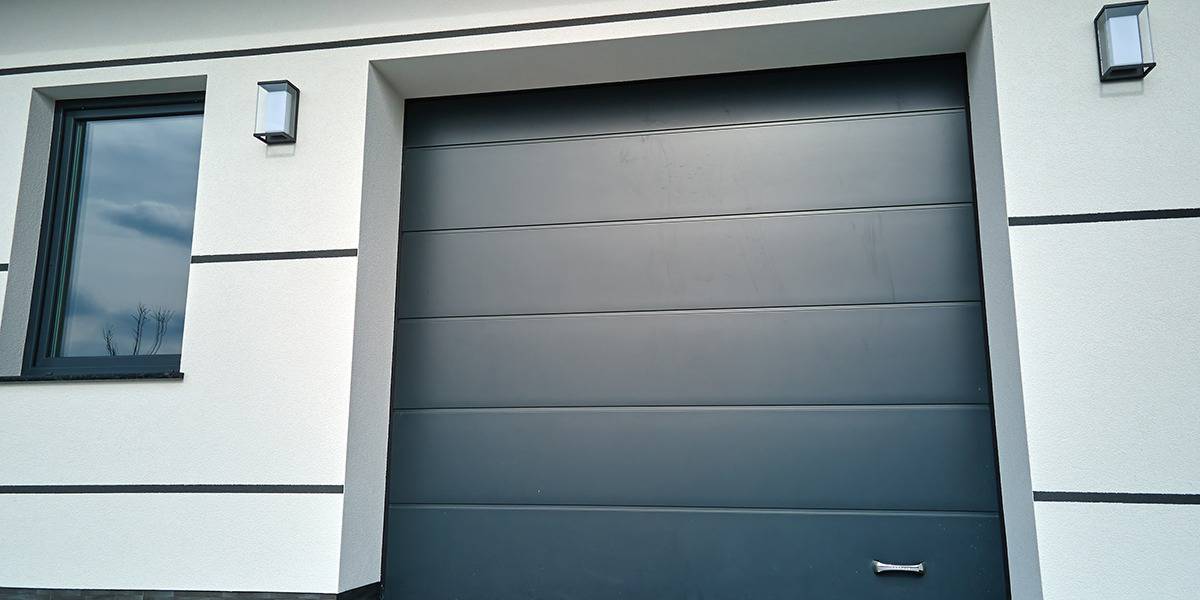To change a garage door from manual to automatic, begin by selecting a suitable automatic opener. Next, install it according to the manufacturer’s instructions.
Upgrading your garage door from manual to automatic brings a blend of convenience and security to your daily life. Imagine never having to step out into the rain to open your garage door again. This transformation not only enhances your home’s functionality but also boosts its value.
The process involves choosing the right automatic opener that fits your garage door’s specifications and installing it with precision. This upgrade requires careful planning and sometimes professional help to ensure everything operates smoothly. Embracing this change can significantly ease your routine, allowing you to enter and exit your garage with just a click of a button. Remember, a well-executed upgrade can offer you peace of mind with its added security features and improved accessibility.

Credit: stigaragedoor.com
Introduction To Garage Door Automation
Imagine your garage door opening with a simple click. That’s the convenience garage door automation brings to your home. Upgrading from a manual to an automatic garage door can enhance both security and ease of use. In this blog post, we’ll explore the benefits of making this switch and compare the two types of garage doors.
Benefits Of Automatic Garage Doors
Automatic garage doors offer numerous advantages:
- Enhanced security features keep homes safer.
- Convenience with remote access is a game-changer.
- Safety sensors prevent accidents.
- Improved energy efficiency seals homes better.
- Increased property value is a bonus.
Manual Vs Automatic: A Comparison
| Feature | Manual Garage Doors | Automatic Garage Doors |
|---|---|---|
| Operation | Physical lifting required | Remote or keypad access |
| Security | Basic lock mechanisms | Advanced security features |
| Safety | No built-in sensors | Obstacle detection sensors |
| Convenience | Manual effort every use | Effortless operation |
| Energy Efficiency | Potential gaps in seal | Tighter sealing technology |

Credit: www.garagedoorrepair.com
Assessing Your Current Garage Door
Ready to upgrade your garage door from manual to automatic? It’s vital to assess your current setup first. Let’s dive into what you need to check before making the switch.
Checking Compatibility For Automation
Start with the door itself. Can it work with an opener? Not all doors can. You might need a new one if it’s too old or heavy. Next, measure the space above and beside the door. This area is crucial for installing the opener.
- Material: Wood, steel, or fiberglass?
- Balance: Does the door open evenly?
- Condition: Any damage or wear?
Check the door’s springs and cables too. They must be in top shape for automation.
Safety Considerations Before Automation
Safety is key. An automatic door needs safety features. Sensors stop the door if there’s something in the way. Make sure your door can fit these.
| Feature | Importance |
|---|---|
| Auto-Reverse | Stops and reverses the door when it hits an obstacle. |
| Manual Release | Lets you open the door during a power outage. |
| Security Lights | Lights up as the door opens or closes. |
Inspect the door’s edges too. They should be smooth to prevent injuries. Also, look at the garage structure. It needs to be strong to hold the new system.
Choosing The Right Automatic Opener
Ready to upgrade your garage door from manual to automatic? Choosing the right automatic opener is crucial. It ensures convenience, safety, and compatibility with your garage door. Explore the different types and key features of automatic openers.
Types Of Garage Door Openers
Garage door openers come in various types. Each has unique advantages.
- Chain Drive: Durable and cost-effective. Ideal for heavy doors.
- Belt Drive: Quiet and smooth. Perfect for attached garages.
- Screw Drive: Low maintenance. Works well in stable climates.
- Direct Drive: Fewer moving parts. Offers quiet operation.
- Jackshaft: Mounts on the wall. Saves ceiling space.
Key Features To Look For
Selecting an opener involves more than just the type. Consider these key features:
| Feature | Benefit |
|---|---|
| Horsepower | Ensures smooth lifting of heavy doors. |
| Security | Protects against unauthorized access. |
| Safety Sensors | Prevents accidents with auto-reverse. |
| Battery Backup | Keeps door operational during power outages. |
| Smart Features | Enables remote access and monitoring. |
| Lighting | Provides visibility in the garage. |
Tools And Materials Needed For Installation
Transforming a garage door from manual to automatic is exciting. The right tools and materials are essential. This section highlights what you need for a smooth installation.
Comprehensive Checklist Of Tools
Tools play a big role in this upgrade. Here’s a list you’ll need:
- Drill – For creating holes.
- Screwdriver Set – For various screws.
- Adjustable Wrench – To tighten or loosen nuts.
- Level – To ensure everything is straight.
- Tape Measure – For precise measurements.
- Ladder – To reach higher places.
- Wire Strippers – For electrical work.
Sourcing Quality Materials
Choosing quality materials is key to a durable setup. Focus on:
| Material | Use |
|---|---|
| Automatic Opener Kit | Main unit for automation. |
| Mounting Brackets | To secure the opener. |
| Heavy-Duty Springs | For smooth door movement. |
| Rollers | To guide the door. |
| Door Reinforcement Kit | Strengthens the door. |
Visit reputable stores for these materials. Ensure they are compatible with your door.
Preparation Steps Before Installation
Switching your garage door from manual to automatic is exciting. Before starting, you need to prepare. This makes the process smoother. Let’s dive into the preparation steps.
Clearing And Measuring The Workspace
First, clear the area around your garage door. This gives workers space. Remove any cars, bikes, or tools. Next, measure the door and surrounding area. Use a tape measure. Write down the sizes. This helps choose the right automatic system.
- Clear items within 5 feet of the door.
- Measure door width and height.
- Note these measurements for later.
Securing The Manual Door Before Conversion
Before changing the door, secure it. This means locking it in place. Use clamps or locks on the tracks. This stops the door from moving. It keeps everyone safe.
- Close the manual door completely.
- Clamp or lock the door tracks above the first roller.
- Check the door is secure and won’t move.
These steps are key for a smooth change. They help the team work safely. Now, you’re ready for the next phase of installation.
Step-by-step Conversion Process
Ready to upgrade your garage door from manual to automatic? The process might seem daunting, but with a clear step-by-step guide, you can transition smoothly and enjoy the convenience of an automatic system. Let’s walk through the necessary steps to convert your garage door.
Mounting The Opener Unit
Select the right opener for your door’s weight and size. Unpack your automatic opener and review the instructions. Ensure you have all the tools and parts.
Position the power unit in the center of the garage ceiling. Use a ladder for safety. Secure the unit with angle irons or brackets provided.
Attach the rail and carriage assembly. These pieces connect the power unit to the door. Align them properly for smooth operation.
Install the emergency release. This feature is crucial for safety. It allows manual operation during power outages.
Attaching The Door To The Opener
First, turn off the power to the garage to ensure safety. Use the manual disconnect to release the garage door from the manual track.
Align the opener’s lifting arm with the door’s center. Secure it to the door with bolts or brackets. Tightness is key for stability.
Next, connect the door bracket to the lifting arm. This is what pulls the door up and down. Ensure connections are secure and straight.
Finally, attach safety sensors. Place them on both sides of the door near the floor. They prevent the door from closing on objects or people.
Test your new automatic door. Make adjustments as needed for smooth and safe operation. Enjoy the convenience of an automatic garage door!
Electrical Considerations For Automatic Doors
Upgrading your garage door to an automatic system offers convenience and security. But it’s important to consider the electrical requirements. Proper installation ensures safety and compliance with local codes. Let’s dive into the key electrical considerations for your new automatic door.
Wiring Your Automatic Opener
Wiring is the heart of an automatic garage door system. Your opener needs power to operate. Here are the steps:
- Locate a power source near the garage door.
- Install a dedicated circuit from the electrical panel.
- Use appropriate gauge wires to handle the opener’s load.
- Secure wires along the ceiling and walls to avoid damage.
Consider hiring a licensed electrician for this task. They ensure proper installation and safety.
Safety Checks And Electrical Compliance
Safety checks are crucial for automatic garage doors. They protect against electrical hazards. Electrical compliance is also mandatory. Here’s what to do:
- Test the opener’s automatic reverse function.
- Check for UL certification on all electrical components.
- Inspect the installation against the National Electrical Code.
- Ensure your system has a battery backup for power outages.
Regular maintenance will keep your system safe and compliant. Always refer to the manufacturer’s guidelines.
Testing And Troubleshooting
Once your garage door goes automatic, testing and troubleshooting become key. These steps ensure smooth operation.
Initial Testing Of The Automatic Door
Start with a careful inspection. Look for any visible issues. Confirm that the door moves freely and that the automatic opener is properly installed.
- Check the power source for a secure connection.
- Operate the door using the control panel or remote.
- Listen for unusual noises during door movement.
- Ensure safety features like auto-reverse function properly.
Common Issues And How To Fix Them
Even with flawless installation, issues can arise. Understanding common problems helps you fix them quickly.
| Issue | Solution |
|---|---|
| Door not responding to remote | Replace remote batteries or reprogram remote |
| Noisy operation | Lubricate moving parts and check for loose hardware |
| Door reverses before or after hitting the floor | Adjust the limit switches on the opener unit |
| Opener doesn’t work with wall switch | Check wires for disconnection or replace the wall switch |
For persistent issues, consult the manual or contact a professional. Regular maintenance avoids future problems.
Maintenance Tips For Your New Automatic Door
Upgrading to an automatic garage door brings convenience. Yet, it demands regular care to stay reliable. This guide presents maintenance tips to keep your new automatic door in top shape.
Regular Upkeep Routines
Regular maintenance ensures smooth operation. Follow these steps:
- Inspect the door monthly. Look for wear and tear.
- Lubricate moving parts every six months. Use proper garage door lubricant.
- Clean door tracks. Wipe them with a damp cloth.
- Test the auto-reverse feature. Place an object under the door. It should reverse.
- Check the door balance. Disconnect the opener. The door should lift easily.
When To Call A Professional For Service
Some issues need expert attention. Call a professional:
- After any impact damage. A pro should assess the door.
- If the door makes strange noises. Grinding or squeaking indicates problems.
- When the door won’t open or close. This can be an opener or sensor issue.
- For electrical problems. Never handle these yourself. It’s dangerous.
- If springs look worn or broken. Spring repair is risky without training.

Credit: gdmedics.com
Costs And Budgeting For Your Automation Project
Upgrading your garage door to an automatic system is exciting.
Yet, it requires careful financial planning.
Understand the costs before starting your project.
This helps avoid surprises.
Estimating Overall Expenses
Begin by calculating the total cost.
This includes not just the automatic opener,
but also installation fees.
Remember additional expenses like electrical work.
| Item | Cost Range |
|---|---|
| Automatic Opener | $150 – $500 |
| Installation | $200 – $400 |
| Additional Parts | $50 – $100 |
| Electrical Work | $100 – $250 |
Ways To Save Money Without Compromising Quality
- Compare prices from different suppliers.
- Look for deals or discounts.
- Consider a DIY installation, if skilled.
- Reuse compatible parts.
- Buy quality products for longevity.
Frequently Asked Questions
What Is Involved In Converting To An Automatic Garage Door?
Converting a manual garage door to an automatic one typically involves installing a garage door opener, mounting the unit and its tracks, and setting up safety sensors and remote controls.
Can Any Manual Garage Door Be Automated?
Most manual garage doors can be upgraded to automatic systems, but a compatibility check by a professional is recommended to ensure the door’s structure and balance are suitable.
How Much Does Automation Of A Garage Door Cost?
The cost of automating a garage door varies depending on the opener model, features, and installation fees, usually ranging from a few hundred to over a thousand dollars.
How Long Does It Take To Convert A Garage Door?
The time required to convert a garage door from manual to automatic can vary, but most installations can be completed in a single day by a professional technician.
Will An Automatic Garage Door Increase Home Value?
Installing an automatic garage door can enhance curb appeal and convenience, potentially increasing home value and attracting modern-minded homebuyers.
Conclusion
Transitioning your garage door from manual to automatic adds convenience and security to your home. Remember, expert installation ensures safety and functionality. Embrace this upgrade and enjoy the ease of a modern, automated garage experience. Ready to make the switch?
Your streamlined, effortless garage access awaits.




